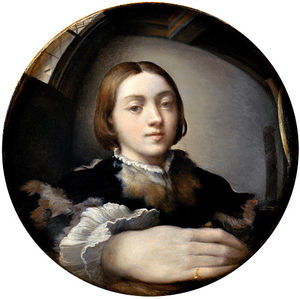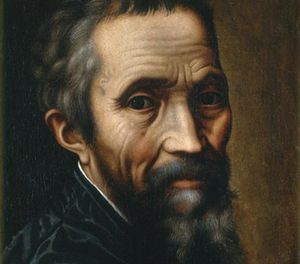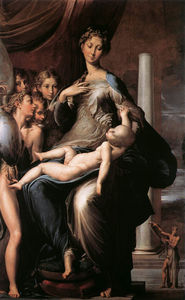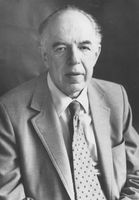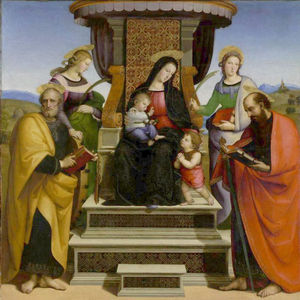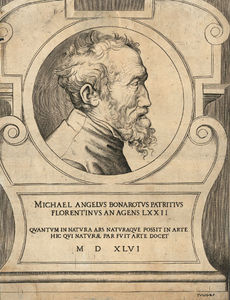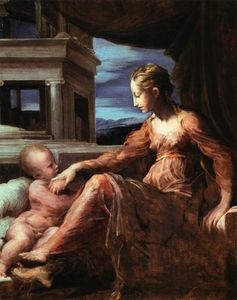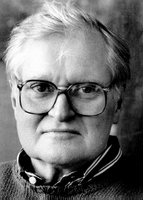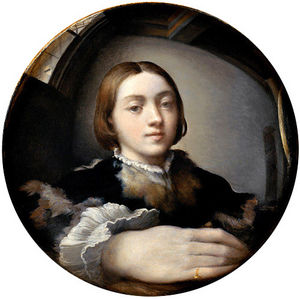Parmigianino Critical Reception
- Full Name:
- Girolamo Francesco Maria Mazzola
- Short Name:
- Parmigianino
- Alternative Names:
- Francesco Mazzola, Parmigiano
- Date of Birth:
- 11 Jan 1503
- Date of Death:
- 24 Aug 1540
- Focus:
- Paintings
- Mediums:
- Oil, Wood, Other
- Subjects:
- Figure, Scenery
- Art Movement:
- Mannerism
- Hometown:
- Parma, Italy
- Parmigianino Critical Reception Page's Content
- During Life
- After Death
Parmigianino During Life
Parmigianino was a controversial artist, who was not afraid to experiment with different styles and techniques. That is why critical perception of his work during the 16th century tended to depend upon the critic's view concerning the artistic relationship between modern practice and the antique.
The great Masters:
Michelangelo, Leonardo and Raphael and other artists of the High Renaissance had set high standards. Artists were expected to channel the grace and accuracy of the great masters who had already established a sense of the ideal classical beauty in their art. Yet, at the same time there was a feeling that this idea of classical beauty was starting to become empty and soulless.
Parmigianino did incorporate the grace of Raphael and the great masters into his paintings, but he also broke from convention and created some highly original work. As such he was always going to receive disapproval from those who disliked his ambiguous spatial compositions and elongated figures, especially in his religious paintings.
Whether early critics dismissed or supported Parmigianino's work, it was inevitable that they would interpret it as reactionary and dramatic.
Parmigianino's Madonna with the Long Neck is often viewed by art historians as being a painting that represents a shift in the development of early 16th century art.
In his book The Story of Art, Ernst Gombrich describes High Renaissance art as 'a crisis of art' and he cites Parmigianino in particular as being an artist who, 'wanted to be unorthodox. He wanted to show that the classical solution of perfect harmony is not the only solution conceivable: the natural simplicity is one way of achieving beauty, but that there are less direct ways of getting interesting effects for sophisticated lovers of art. '
The New Raphael:
When Parmigianino moved to Rome in 1524 and presented his work to the Pope he was hailed as the new Raphael. At the papal court he gained religious commissions and an international reputation. He was in some ways the ideal courtly artist: young, intelligent, with a sophisticated manner and style of work, he wowed critics. It was just a shame for Parmigianino that this early success ended abruptly when Rome was invaded in 1527 and he was forced to flee the city.
Giorgio Vasari:
Vasari was an Italian painter and architect famous for his biographies of Italian artists. In 1550 he wrote about Parmigianino and begins his account of Parmigianino's life by praising the artist's invention and ability, and called him 'bountifully endowed by Heaven' with 'nobility, sweetness and grace.'
He referred to Parmigianino and other Mannerist artists of the time as having reached a peak of excellence in style and of having exceeded the accomplishments of the ancient. He wrote, 'style is improved' and that 'by frequently copying the most beautiful things and by combining the finest members, whether hands, heads, bodies, or legs to produce a perfect figure which, being introduced in every work and every figure, forms what is known as fines style. '
Parmigianino and these artists had attained a, 'boldness of design, the subtlest imitation of Nature in trifling details, good rule, better order, correct proportion, perfect design and divine grace, prolific and diving to the depth of art, endowing... figures with motion and breadth. ' Vasari clearly held the work of Parmigianino in high regard and approved of how he was developing his style in relation to the classical artists.
However, Vasari later went on to state that Parmigianino's obsession with alchemy and other ungodly beliefs prevented him from becoming the greatest artist of all time: 'Would to God that he had always pursued the studies of painting, and had not sought to pry into the secrets of congealing mercury... for then he would have been without an equal and truly unique in the art of painting, whereas, by searching for that which he could never find, he wasted his time, wronged his art and did harm to his own life and fame. ' It is clear that Vasari was disappointed that in his opinion Parmigianino did not fulfill his artistic potential.
It is true that Parmigianino ended his life in exile and disgrace after failing to complete a religious commission, but this did not prevent the works he left behind from being admired and sought-after by collectors. Indeed, soon after he died, Giulio Bonasone created a series of engravings reproducing Parmigianino's best works.
Parmigianino After Death
It should be noted that 20th century art critics view Parmigianino's style in a very different manner than Vasari. Whereas Vasari admired Parmigianino's 'motion and breadth', modern critics tend to scrutinize and enjoy the element of tension and anxiety in his paintings, which to the modern critic are indicators of the unrest and religious uncertainty at the time.
Contemporary critics would look beyond the framework of art history and view Parmigianino's rebellion against classical forms as a sign of spiritual malaise. They would perhaps see this anxiety as a direct result of the trauma that the Catholic Church was experiencing in the wake of the reformation.
So critical perception to Parmigianino has most definitely evolved over time and perhaps falls into two main strands: early critics who saw his work as exaggerated creations in order to challenge the artistic masters of his day, and later critics who view it as an effort to translate the spiritual confusions of a turbulent era of history.
John Ashbery - poetic interpretation:
In recent times Parmigianino's work received a boost of recognition through American poet John Ashbery's analysis of his Self-Portrait in a Convex Mirror in his prize-winning poem. In 1975 Ashbery, inspired by Parmigianino's painting, wrote the poem Self-portrait in a Convex Mirror. It later served as the title for his collection of poems that won the collection Pulitzer Prize, the National Book Award, and the National Book Critics Circle Award.
The collection's title poem is considered to be one of the masterpieces of late 20th-century American poetic literature. In this long poem Ashbery mixes critical analysis about Parmigianino's work with a reflection upon his own poetic mental processes.
Ashbery was enthusiastic about Parmigianino's art and in a review of his paintings in 1964 he argued that Parmigianino's experiments with shape and spaces anticipated the deformations of both surrealism and cubism.
He stated that, 'when one remembers the important role distortion plays throughout his work... starting with the self-portrait in which the hand is larger than the head, it is possible to see in Parmigianino an ancestor of Picasso and other artists of today'.
Ashbery's opinion represents that of many modern critics who started to praise Parmigianino and other Mannerists for using matter and manner to create new possibilities in art.

